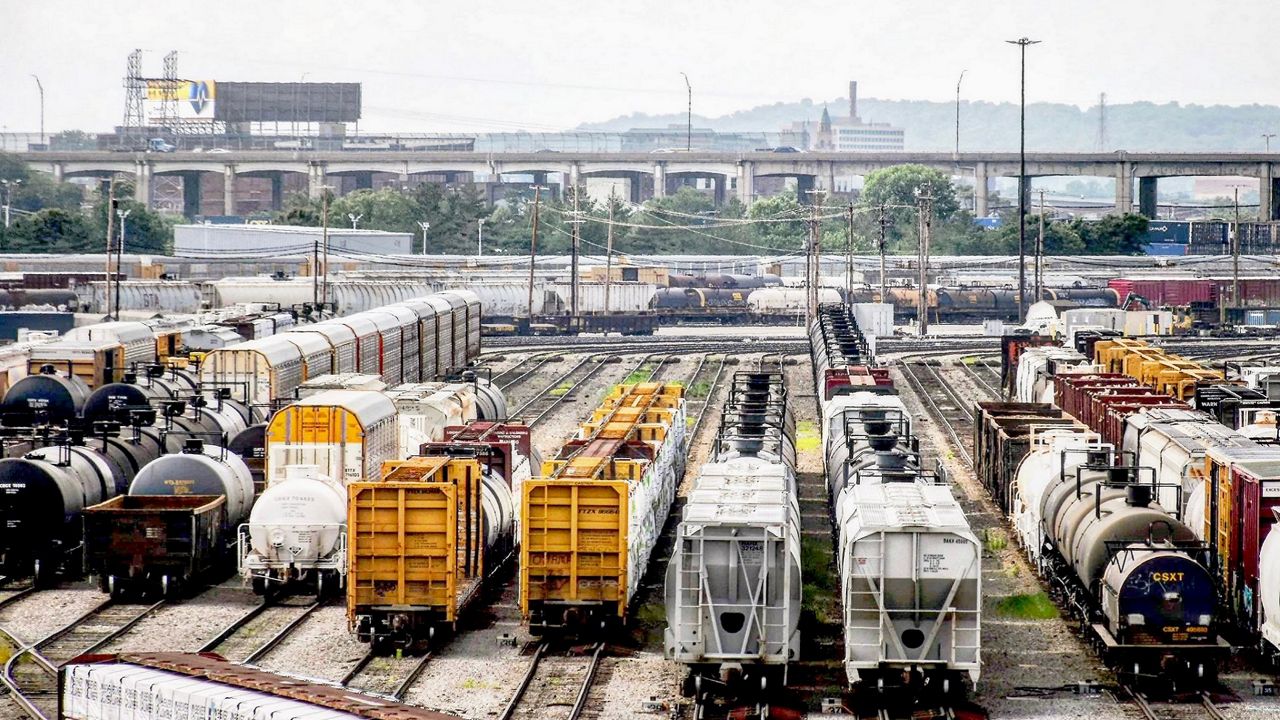CINCINNATI — The City of Cincinnati received more than $6 million in federal grants to make safety improvements at four major railroad crossings between downtown and the region’s West Side.
What You Need To Know
- The City of Cincinnati received more than $6 million in federal grant funding to make safety improvements at four major railroad crossings
- Each of the crossings is along River Road/U.S. 50 between downtown and Sayler Park
- Beyond enhancing safety, the improvements will make the railroads more efficient, which is good for business, according to The Port
- Despite the enhancements, there's a need for more education about railroad crossings, per OKI
The planned enhancements aim to make the crossings safer for not only the trains that use tracks but also the many cars, trucks, pedestrians and bicycles that cross them every day. Beyond improving safety, the projects may also have financial benefits by improving the overall efficiency of the railroads that rely on them.
Each of the four crossings is along River Road/U.S. 50 between downtown and Sayler Park, a Cincinnati neighborhood. The crossings extend over CSX Transportation and Central Railroad of Indiana tracks.
The crossings are at the following intersections:
Barkley Avenue (near Riverside Park)
Access Road (near Anderson Ferry Road)
Anderson Ferry Road
5300 River Rd. (near Bender Road)
Improvements will include new, programmable traffic signals with systems that come with state-of-the-art safety features. Those include preemptive warnings, gates, specialized signalization and lighting and approach signage.
The total grant award comes in at $6.06 million, according to the U.S. Department of Transportation. The funds come from the Federal Railroad Administration’s Consolidated Rail and Infrastructure Safety Improvements program.
The funds will be available in 2023. The city will provide a local matching of 20%, or a little more than $1.2 million.
The city expects to begin construction at the railroad crossings shortly after the signing of the project agreements. They provided a broad and tentative completion date of 2026.
In a statement, Mayor Aftab Pureval called the funding key for creating “safer crossings for both pedestrians and vehicles” and called it another investment in the city’s west side. In his statement, Pureval thanked Pete Buttigieg, the transportation secretary, for his “willingness to meet with me to discuss our region’s infrastructure and transportation priorities.”
The improvements aim to enhance safety for all users, which is especially important for trucks carrying hazardous materials that currently get backed up onto River Road, impeding traffic.
Combined with planned improvements to the Brent Spence Bridge and Western Hills Viaduct, the city believes Cincinnati will be in a better position to “capitalize on its geographic assets that make southwest Ohio a strategic hub for multimodal freight,” per a release from the mayor’s office.
Improving efficiency for rail and truck to barge and vice versa is a significant climate change reduction measure due to low carbon benefits that barge transit offers over any other freight mode.
“We’re thrilled and grateful for this grant,” said Laura Bruner, president and CEO of The Port. “It will improve safety and reliability of railroad crossings and vital infrastructure, connect people to jobs, increase supply chain efficiencies and drive sustainable economic growth.”
Robyn Bancroft, strategic initiatives manager for Ohio-Kentucky-Indiana Regional Council of Governments (OKI), said railroad efficiency is a “bonus” of these projects, which make them a “win-win” for our citizens and businesses. But the top priority is safety.
This stretch of the U.S. 50 corridor is a major convergence of all sorts of vehicles, including personal vehicles, public transit, freight trucks, commercial trains, even river barges. Bicyclists and pedestrians use that area, too.
This project is part of an existing long-term, public-private strategy shared by the city, OKI and the Ohio Rail Development Commission to improve safety and freight flow in the U.S. 50 (West River Road) corridor.
Once crews made the improvements at these four new gates, every public crossing in the corridor will have modern safety devices.
The area needs those crossing safety improvements “now more than ever,” Bancroft said. Benchmark River and Rail, a shipping and storage company, processed 413 railcars totaling about 3,000 tank-truck loads, resulting in about 6,000 crossings of the rail lines.
That number will more than double by 2025, Bancroft said.
“With more vehicles crossing the West River Road corridor’s tracks, the likelihood of a safety incident occurring also increases. OKI, together with our public and private partners, want to support SAFE economic growth,” she added.
OKI said while safety improvements are important, education remains vital to railroad safety.
Of the 66 rail grade crossing-related incidents from 2016 to 2020, 73% of those crossings had a safety device of some type in place to warn drivers, pedestrians and bicyclists of oncoming trains, OKI staff found while putting together the agency’s new freight plan.
Nearly all the crashes at gates (92%), actions by the driver, pedestrian, or bicyclist are to blame, per OKI data. About 60% of those cases involved a driver who didn’t stop or went around or through the gate.



